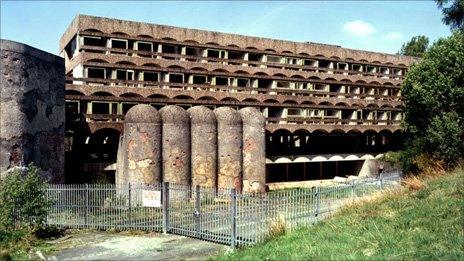St Peter's Seminary in Cardross: Funds to make modern ruin an arts venue
- Published
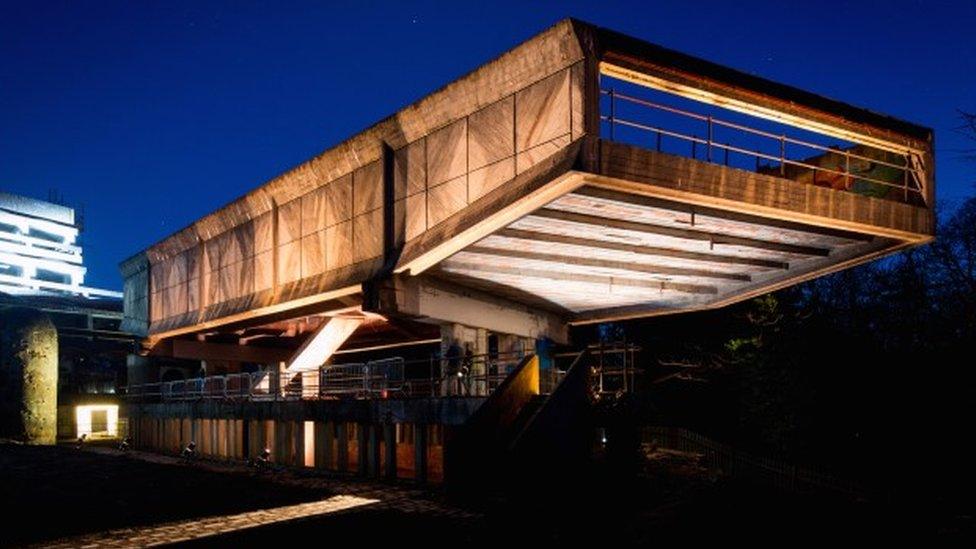
The Hinterland sound and lights show is currently taking place at St Peter's
A plan to transform Scotland's most famous modernist ruin into an arts venue has been given more than £4m in lottery funding and arts cash.
St Peter's Seminary in Cardross was built in the 1960s as a college for priests but closed in the 1980s.
The A-listed building, near Helensburgh in Argyll, is derelict but considered by some to be a modernist masterpiece.
It is currently hosting a sound and lights show for Scotland's Festival of Architecture.
The £4.2m aims to secure its long-term role as an arts venue.
The Heritage Lottery Fund has awarded £3,806,000 to Glasgow-based arts organisation NVA, which is leading the project to make St Peter's safe for performance art.
Creative Scotland is also contributing £400,000 towards the project.
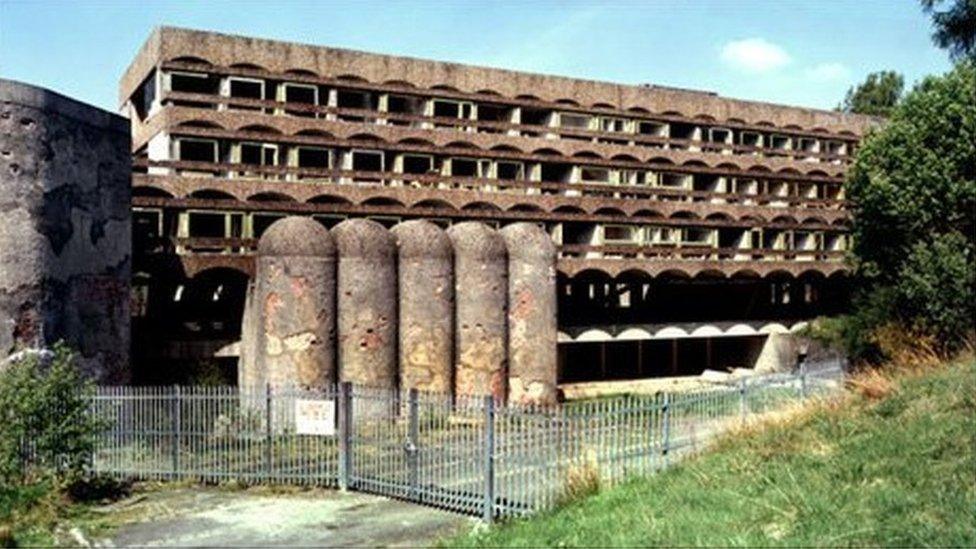
St Peter's Seminary opened in 1966 and was deconsecrated in 1980
Angus Farquhar, creative director of NVA, said: "This is a historic moment in the life of St Peter's Seminary.
"We are now able to start work on its permanent transformation into an international cultural centre that will speak to the creative life of Europe."
St Peter's opened as a training centre for priests in 1966 but fell into ruin after it closed its doors in 1980.
Despite not being used for more than 30 years, it continued to attract visitors due to its ground-breaking design by Isi Metzstein and Andy MacMillan of the former Gillespie, Kidd and Coia architects.
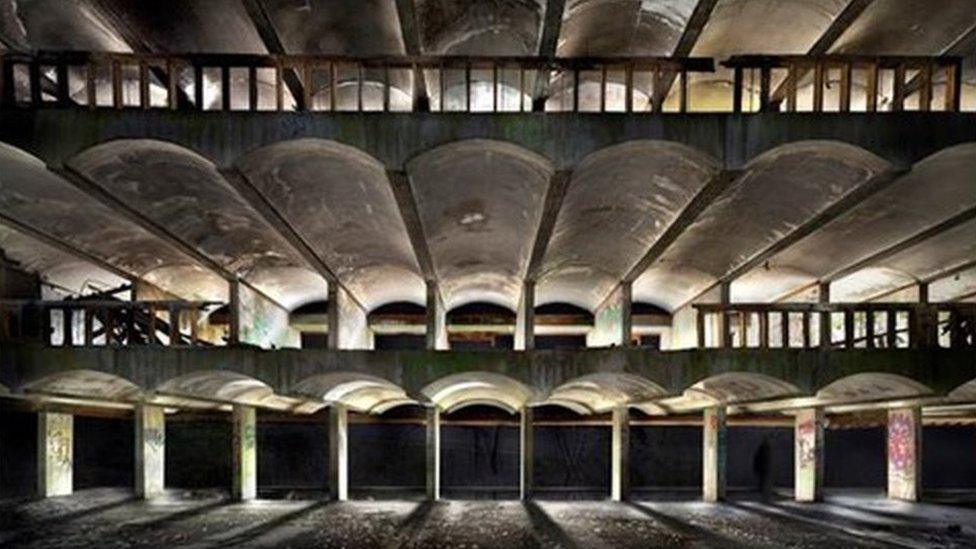
The plan is now to preserve what is left of the building and make it safe as a permanent arts venue.
Key elements of the building will be restored while others will be transformed to allow the public safe access to large scale events and performance as well as to stage smaller community activities.
The triple-height chapel will be partially-restored and converted into a 600-capacity venue, while the former sacristy and crypt will be a focal point for exhibitions.
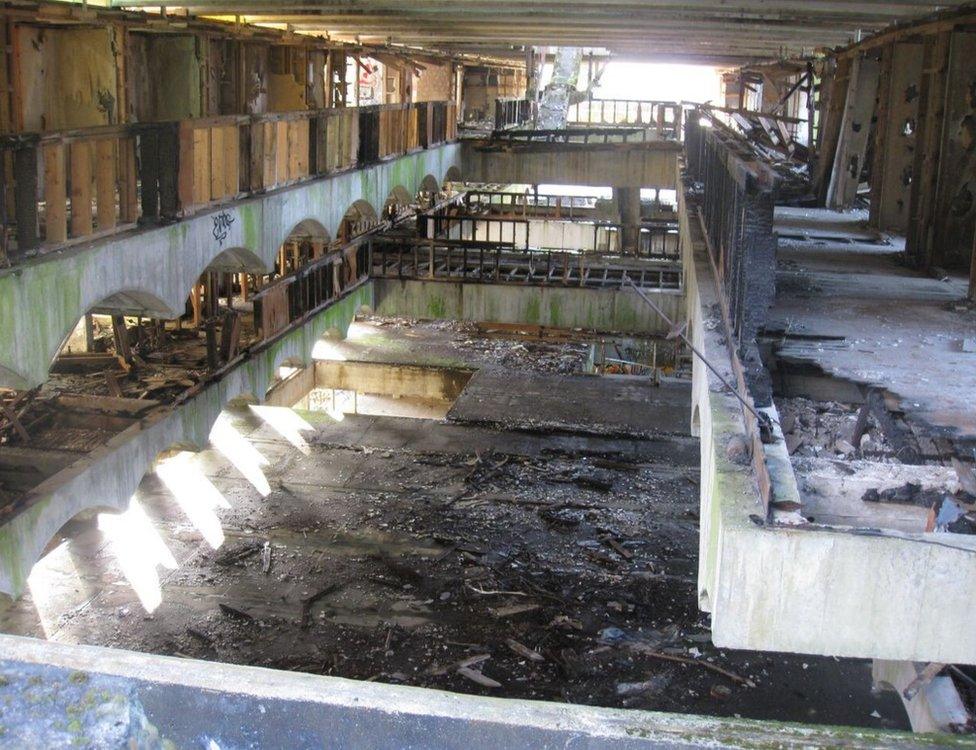
Brian McLaren, chair of NVA, said: "The plans for the site will create a truly unique place where audiences and visitors can experience culture, learning and celebration of the site's remarkable heritage in genuinely new ways."
The transformation will include the 104-acre rural estate surrounding St Peter's - an estate which includes the remains of the 15th century Kilmahew Castle.
A path network based on the original 19th century designed landscape will be reinstated, historic bridges restored and the Victorian walled garden brought back into productive use.
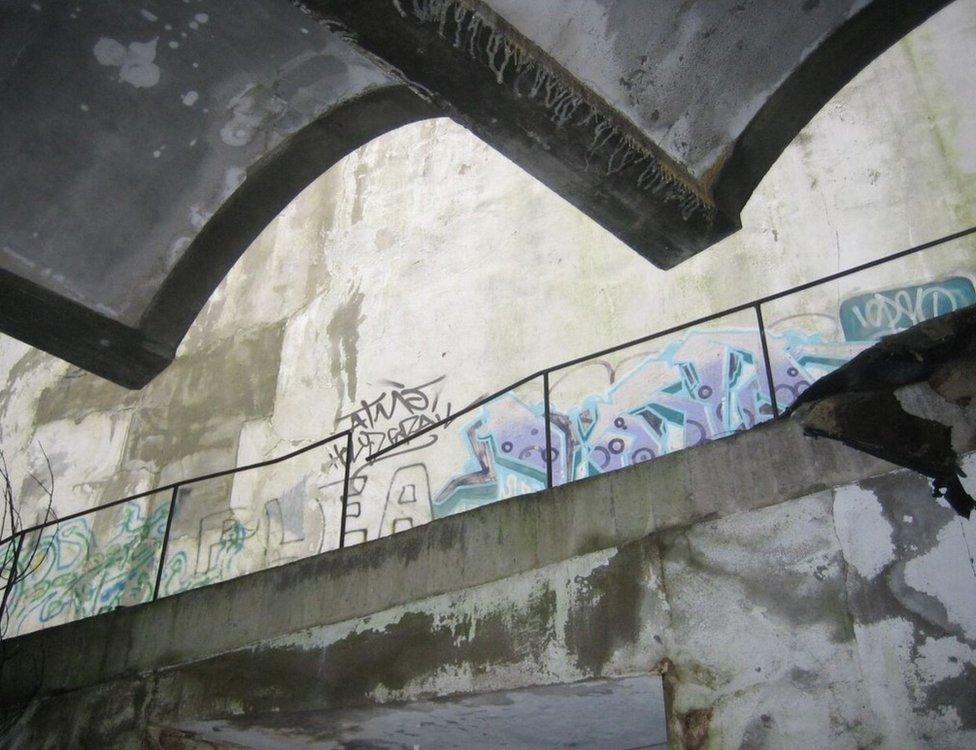
It is expected that more than 200 people will become involved as volunteers.
Lucy Casot, head of the Heritage Lottery Fund in Scotland, said: "After 25 years of decline, this ground-breaking project has the potential to save an internationally significant building, exploiting its commanding presence to produce an exceptional arts venue.
"Its appeal will attract new audiences from near and far. Its transformed estate will become a natural haven for the local community to explore, enjoy and be proud of."
Audiences are promised a "subtle composition of lighting, projection and choral music"
The Hinterland event - a series of 10 sound and lights shows at St Peter's from 18 to 27 March - got under way last week to officially launch Scotland's Festival of Architecture.
The £4.2m funding should ensure that events of this type will be hosted regularly in the future.
Philip Deverell, director of strategy at Creative Scotland, said: "The recent success of the Hinterland festival held at St Peter's highlighted how important the building is to both the people of Scotland and the international architectural community.
"It seems fitting that in this the Year of Innovation, Architecture and Design that we have taken steps to secure the future of this hugely significant building."
- Published18 March 2016
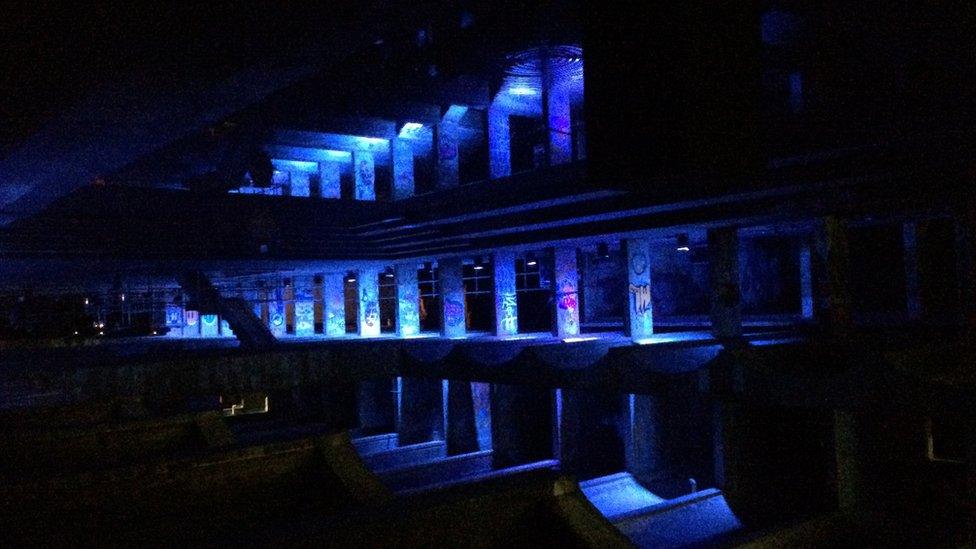
- Published2 December 2015

- Published10 May 2011
